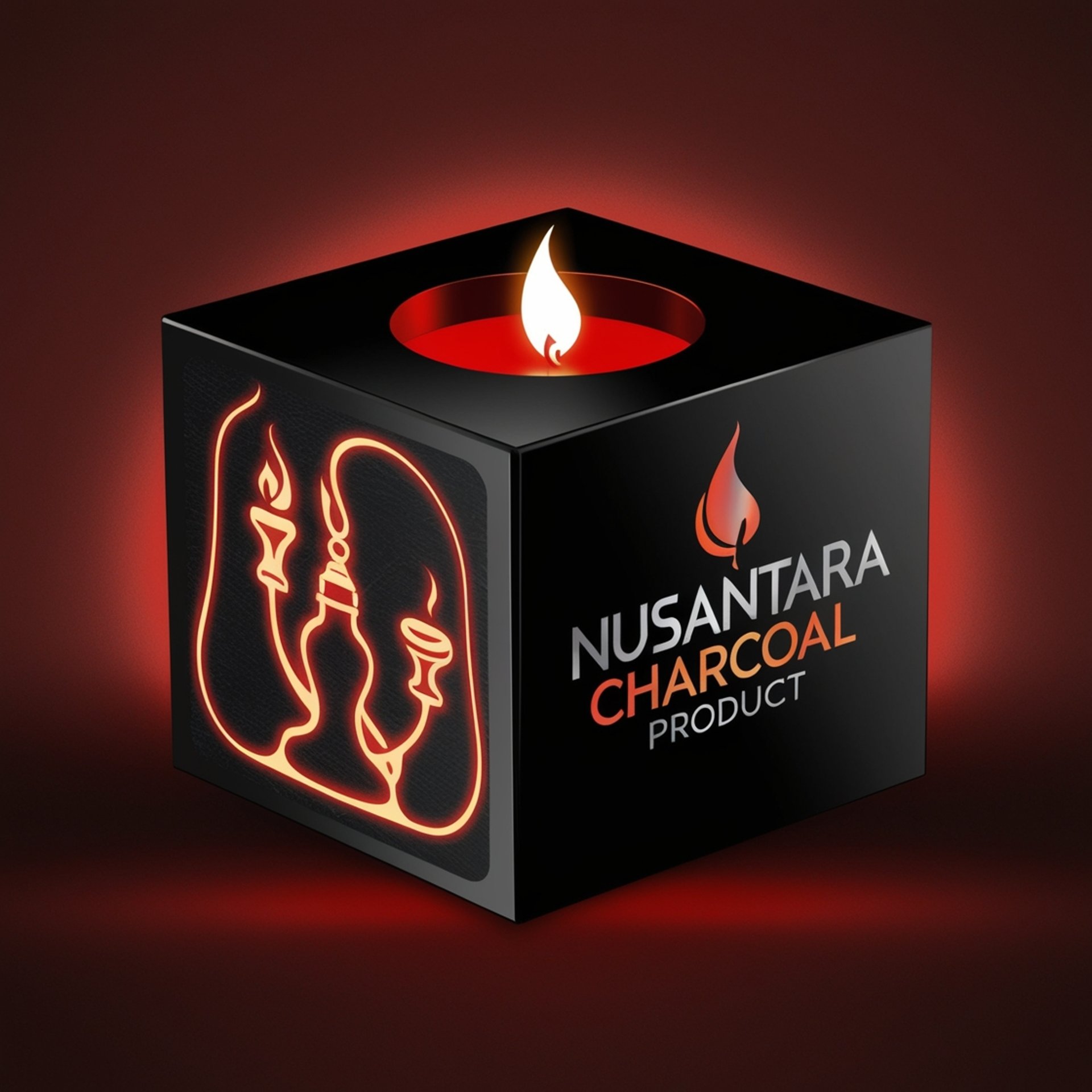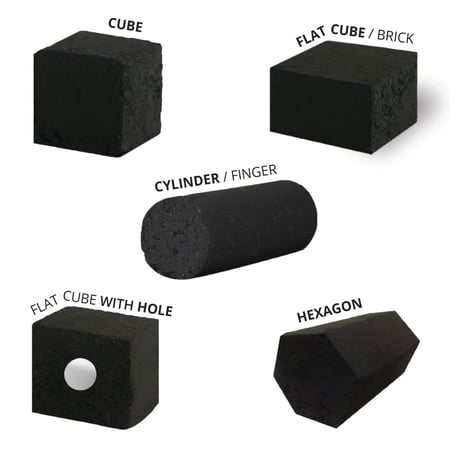
How to place ORDER Shisa / Hookah charcoal briquette straight from Factory



When choosing hookah coal, several factors come into play, from the type of coal to its size, shape, and quality. Understanding these factors can help both manufacturers and consumers select the best coal for their needs. Here's a detailed breakdown of the different aspects of hookah coal, including types, size and shape, quality indicators (ash content, drop test, fixed carbon), and packaging considerations (inner plastic, inner box, master box, custom branding).
1. Types of Hookah Coal
There are primarily two types of hookah coals on the market:
a. Natural Charcoal
Source: Made from compressed wood or coconut shells.
Characteristics: Burns longer and cleaner with a more even heat output.
Common Materials:
Coconut Shells: Often considered the best material because of its low ash content and odorless.
Wood: Less common than coconut shells, but still used for certain types of natural coal.
Burn Time: Typically 1-2 hours.
Heat Output: Even and steady heat, ideal for controlling the flavor of the tobacco.
Environmental Impact: More eco-friendly than quick-light coals since they are made from natural materials and contain no chemicals.
b. Quick-Lighting Charcoal
Source: Usually made from compressed sawdust or other biomass materials, often mixed with binding agents.
Characteristics: Coated with a layer of chemicals that allow it to light easily.
Burn Time: Shorter than natural coals, generally 30-45 minutes.
Heat Output: Less steady, can produce harsher heat, which might affect the flavor.
Convenience: Ideal for those looking for a quick start but less ideal for flavor retention.
Environmental Impact: Contains chemical additives, which may have a negative environmental and healthy impact.
2. Size and Shape of Hookah Coal
The size and shape of the coal can significantly affect its burn time and heat distribution.
a. Size
Small: Typically 25-30mm in diameter and 20-25mm in height. Quick-light coals often fall into this size range.
Medium: 33-40mm in diameter and 25-30mm in height. Common for natural coals.
Large: 40-50mm in diameter and 30-40mm in height. Often used for longer sessions and higher heat output. The larger the coal, the longer it will burn, but it may require more time to heat up. Smaller coals are quicker to light and might burn hotter, but their heat doesn’t last as long.
b. Shape
Cubic (Square): The most common shape for hookah coals. Cubes typically range from 25x25mm to 40x40mm and are easy to stack on the hookah bowl.
Round: Some brands offer round coals, though they’re less common. Round coals tend to burn evenly and have a longer, slower burn, but they are less commonly found in smaller sizes.
Hexagonal: Rare, but sometimes used for specific purposes in hookah smoking.
Flat Discs: Typically used for long, even heat distribution. These are ideal for premium hookah setups where an even smoke experience is important.
3. Quality of Hookah Coal
a. Ash Content
Natural Charcoal: High-quality natural coals should have very low ash content (usually under 5%). High ash content can affect the flavor and burn quality.
Quick-Lighting Charcoal: Often contains higher ash content due to the additives used to help it light quickly. Premium quick-light coals may have lower ash content, but they are typically higher in chemical additives.
Testing Ash Content: Good quality hookah coal burns cleanly, leaving behind minimal ash, which is important to prevent clogging the airways and reducing the quality of the smoke.
b. Drop Test
The drop test is a way to measure the durability of the coal. A high-quality hookah coal will have:
Durability: A drop from a height of 1 meter (about 3 feet) should not cause the coal to break into pieces. It should remain intact without cracks, which could cause uneven burning and an inconsistent smoke experience.
Lower-quality coals may crack or shatter more easily upon impact.
c. Fixed Carbon
Fixed carbon is the portion of the coal that remains after the volatile materials have burned off. It’s the essential substance that produces heat.
Higher Fixed Carbon Content: The higher the fixed carbon percentage (ideally around 70%-80%), the longer and steadier the coal will burn. Natural coals often have higher fixed carbon content.
Lower Fixed Carbon: Coals with a lower percentage of fixed carbon tend to burn out faster and might not provide as much heat.
4. Packaging of Hookah Coal
a. Inner Plastic
Protective Sealing: The inner plastic packaging is designed to preserve the freshness and prevent moisture absorption. It keeps the coals from becoming brittle or losing their heat efficiency.
Material: Typically made from food-grade plastic, which is non-toxic and helps keep the coals dry and intact.
Design: Vacuum-sealed or foil-wrapped inner plastic helps prevent exposure to air, which could affect the coal’s burn properties.
b. Inner Box
Branding: Custom branding on the inner box can be used for retail or promotional purposes, providing the manufacturer with an opportunity to showcase their logo and product information.
Protection: The inner box protects the coal from physical damage during shipping. It is often made of sturdy cardboard or a combination of cardboard and foam inserts.
User-Friendly: The box should be designed for easy storage and organization, with a secure seal to maintain the integrity of the coals.
c. Master Box
Outer Packaging: The master box is the large outer carton used for bulk shipping. It is designed to hold multiple units of inner boxes or individual coal packs usually 10kg or 20kg.
Bulk Quantities: The master box is usually designed to hold anywhere from 10 to 50 inner boxes, depending on the packaging size and coal weight.
Branding and Display: It often carries the logo, product name, and other relevant information about the coal for easy identification during transportation and at retail stores.
d. Custom Branding
Custom branding on both inner and outer packaging is essential for manufacturers looking to stand out in the market. It involves:
Logo Placement: The brand’s logo and name are prominently featured to ensure visibility.
Design: Packaging design can include color schemes, product details (e.g., type of coal, burn time, materials), and any promotional messaging (e.g., eco-friendly, premium quality).
Barcodes: Necessary for inventory tracking, sales, and shipping.
Premium Packaging: For high-end brands, packaging can be upgraded with luxury touches such as foil stamps, embossing, and high-quality printed materials.
5. Quality Control Considerations
When assessing Hookah coal quality, it's important to maintain strict quality control to ensure consistency across production.
Laboratory testing to verify ash content, fixed carbon, and heat output.
Packaging checks to ensure proper sealing and durability.
Visual inspections for uniform size and shape.
Conclusion
Choosing the right hookah coal depends on several factors, including the type (natural vs. quick-lighting), the quality (ash content, drop test, fixed carbon), and the packaging. Natural coals, especially those made from coconut shells, are favored for their clean burn and long-lasting heat, while quick-lighting coals provide convenience but can be harsher on the taste. Proper packaging ensures product freshness, quality, and brand visibility, while custom branding offers manufacturers an opportunity to stand out in a competitive market.
When selecting coals, consider factors like burn time, heat output, and the smoking experience, and always prioritize quality materials and careful packaging to maintain an optimal hookah session.



